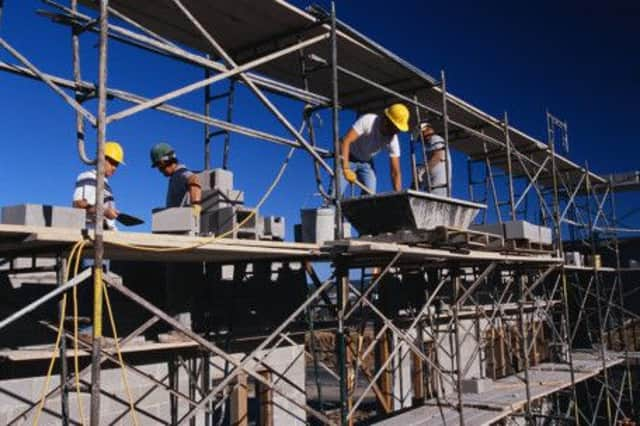Fall in housebuilding hurts construction sector


Total construction output sank by 2.1 per cent compared with the previous quarter – a bigger decline than the 1.8 per cent drop pencilled into an earlier estimate of fourth-quarter national economic output from the Office for National Statistics (ONS).
The volume of new home construction – the driving force for increased construction output earlier in the year – fell by 0.2 per cent after growing 6.1 per cent in the third quarter of 2014, its first fall since the first three months of 2013.
Advertisement
Hide AdAdvertisement
Hide AdThe ONS said the decline in new home-building reflected reduced orders three to six months earlier. Britain’s housing market has been slowing since the middle of 2014, when regulators introduced tougher mortgage-lending credit checks.
Annual UK house price rises exceeded 10 per cent in mid-2014, but a survey of members of the Royal Institution of Chartered Surveyors on Thursday showed that house prices rose last month at their slowest annual pace since May 2013.
Construction makes up about 6 per cent of the UK economy, and the ONS said the revision to fourth-quarter output was not big enough to affect its previous assessment of British economic growth, which it estimated to be a 0.5 per cent increase in GDP.
For December alone, total construction output rose by just 0.4 per cent after dropping by 1.8 per cent in November, much less of a rebound than the 2.8 per cent month-on-month growth forecast by economists.
Advertisement
Hide AdAdvertisement
Hide AdFor 2014 as a whole, output was up 7.4 per cent, the fastest growth since 2010, but momentum is slowing and output in December alone was only 5.5 per cent higher compared with a year earlier.
Other data have pointed to a slowdown in construction at the end of 2014 too. A closely-watched survey of purchasing managers fell to a 16-month low in December before picking up in January.